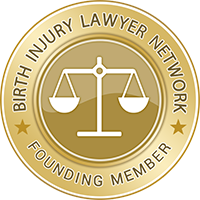Hypertonia
Hypertonia, Can Be a Result of Brain Damage
Hypertonia is a condition characterized by an abnormal increase in muscle tension and a reduced ability of a muscle to stretch. This condition happens when the motor pathways in the central nervous system is injured or damaged. The motor pathways carry information from the central nervous system to the muscles and control posture, muscle, tone and reflexes. Simply put, it is a condition caused by the brain’s inability to control the muscles during movement and not damage to the muscles and nerves.
Hypertonia can happen among newborns and it is most commonly caused by severe brain damage. The damage may be associated with spinal cord injury, multiple sclerosis, cerebral palsy, anoxic brain damage, brain or severe head injury, or some diseases such as phenylketonuria. Other causes of the condition are diseases and conditions that involve damage to the central nervous system.
An infant with hypertonia will exhibit the condition by clenching their fingers into a fist or curling their toes, or crossing their legs in a scissor-like fashion when picked up.
Different Forms of Childhood Hypertonia
Spasticity
Spastic hypertonia, which is often seen in disorders such as cerebral palsy, stroke and spinal cord injury, involves uncontrollable muscle spasms, stiffening or straightening out of muscles, shock-like contractions of all or part of a group of muscles, and abnormal muscle tone. It can vary depending on a child’s state of alertness, activity, or posture. Anxiety, emotional state, pain, surface contact, or other non-noxious sensory input can increase spasticity. Movement of the involved muscles or maintenance of the limb against gravity can worsen the condition.
Dystonia
Dystonic hypertonia which is commonly triggered or exacerbated by attempted voluntary movement refers to muscle resistance to passive stretching and a tendency of a limb to return to a fixed involuntary and sometimes abnormal posture following movement. It may fluctuate in presence and severity over time. The severity and quality of dystonic postures may vary with body position, specific tasks, emotional state, or level of consciousness.
Rigidity
Rigidity is the type of hypertonia most common in Parkinsonism. It is characterized by the involuntary stiffening or straightening out of muscles, accompanied by abnormally increased muscle tone and the reduced ability of a muscle to stretch. Rigidity may be associated with bradykinesia, tremor, flexed posture, and gait instability, leading to the syndrome of juvenile Parkinsonism. It can also be attributed to disorders of dopaminergic transmission or basal ganglia function.
Neonatal hypertonia can lead to severe functional disability. Infants having severe hypertonia may experience feeding difficulties, pain, discomfort and severe disabling joint contractures. Caring for an infant with hypertonia is not easy because medications are rarely employed for its treatment. Untreated hypertonia can lead to loss of function and deformity.
Find an Experienced Birth Injury Attorney in your Local Community
 Find A Lawyer in Columbus, OH
Find A Lawyer in Ohio
Find A Lawyer in Any State
Find A Lawyer in Columbus, OH
Find A Lawyer in Ohio
Find A Lawyer in Any State
